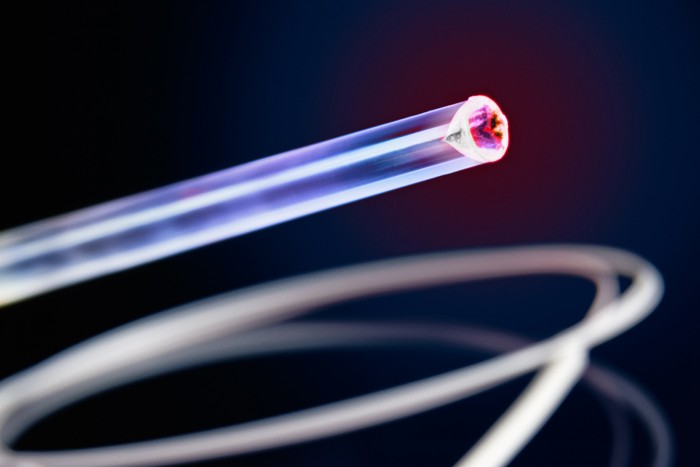
In a collaborative effort between Massachusettes Institute of Technology (MIT) and Harvard Medical School, researchers have created a totally elastic prototype of fibre optics. The microscopic tubes consist of hydrogel, a biocompatible material that is stretchy and made almost entirely of water.
Even though hydrogel is still too stiff to be applied in such a way, the development marks a valuable step towards implanting fibre optics in the human brain safely.
Xuanhe Zhao, one of MIT’s scientists, explains, “The brain is like a bowl of Jell-O, whereas these fibres are like glass — very rigid, which can possibly damage brain tissues. If these fibres could match the flexibility and softness of the brain, they could provide long-term more effective stimulation and therapy.”
The practice of activating brain cells and invigorating neurones with microscopic light is called optogenetics. The elastic fibres may one day be used to channel therapeutic bursts of light to the brain from an LED light source.
In the meantime, the hydrogel fibres have some immediate benefits to less sensitive parts of the body. The malleable fibres were made to conform to the human body's constant movement without deteriorating easily.
The light-carrying rubbery substance has been shown to stretch over 7 times its original length without tearing and scientists are using its elasticity to measure bodily strain. The hydrogel fibres can be embedded or fitted around a patient’s arm or leg, measuring muscle tension or mobility by monitoring the way the hydrogel distributes light along the way.
“When you stretch a certain portion of the fibre, the dimensions of that part of the fibre changes, along with the amount of light that region absorbs and scatters, so in this way, the fibre can serve as a sensor of strain,” says Xinyue Liu, a fellow student and part of Zhao’s MIT team.




